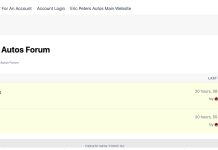In two words, a lot.
Volkswagen Group’s worldwide repair of 11 million diesel vehicles to bring their emissions systems into compliance with pollution regulations is shaping up to be one of the most complex and costly fixes in automotive history.
VW will need to install parts for vehicles already on the road that were not designed to accommodate the equipment. The work may may need to be done in special shops set up for the purpose. And it will have to pass muster with dozens of countries with their own regulations.
“I can’t think of any other recall that would be as comprehensive,” said Jake Fisher, director of automotive testing at Consumer Reports magazine. “It’s really an expensive rework.”
The repair costs are only part of what Volkswagen is going to have to spend to get through a corporate crisis sparked by revelations it rigged its diesel cars for years to fool emissions tests. The company is also compensating dealers for storing cars they can’t sell.
It faces more than 325 consumer lawsuits in the U.S, according to data compiled by Bloomberg, and has hired U.S. law firm Jones Day to conduct an internal investigation into the company’s actions.
Adding in likely fines, settlements with the U.S. Environmental Protection Agency, state authorities, the Justice Department and dozens of countries in Europe, and the cost could exceed 30 billion euros ($34 billion), according to the Center of Automotive Management in Bergisch Gladbach, Germany.
Forecast cut
The 6.5 billion euros already set aside will be inadequate, according to a Sandford C. Bernstein Ltd. note released Oct. 19. The firm has cut its VW forecast “very substantially” because of the expected charges, which will amount to at least 10 billion euros in 2015 and another 5 billion in 2016.
“We believe a figure of 15 billion euros to 20 billion euros is an able estimate at this stage for cash-out costs,” the firm said.
Volkswagen is equipped to take a big financial hit. The company had 18.6 billion euros in cash available at the end of last year, according to its annual report. The company is moving to increase that position by cutting annual investment by about 1 billion euros at its namesake car brand. Additionally, all non-essential projects are being delayed or canceled as a result of the scandal.
The company will not comment on specific plans yet as they need to be approved by government agencies, Jeannine Ginivan, a VW spokeswoman, said in an email. “Volkswagen is working as quickly as possible to develop a remedy for the affected vehicles,” she said.
Volkswagen of America CEO Michael Horn told Congress in testimony on Oct. 8 that the company is considering a combination of software and hardware repairs. Many of the older cars may require a retrofit with technology VW once eschewed but is used in most other diesels cars sold in the U.S., a system known as urea-based selective catalytic reduction.
That kind of exhaust treatment involves spritzing a chemical into the exhaust to reduce emissions, and would require a major re-engineering. Horn said a rear tank for the urea mix and an additional catalytic converter might have to be added. Because of the complexity, Horn said, there is no definite timetable to complete the repairs but it could take more than a year.
Pickup frames
Fisher said the only comparably complex recalls involved replacing an entire engine or a structural frame in older pickup trucks. Even then, automakers in those recalls were replacing a defective part with a new part of a similar size in the same place.
Volkswagen will have to find a place for a multigallon urea tank. They may have to drill through sheet metal to create a filler neck that’s convenient for consumers who would need to replenish the liquid every three or four months. It may cost thousands of dollars per car, he said.
The urea technology has been used by most other automakers to meet ever-stricter pollution standards by the U.S. Environmental Protection Agency and the California Air Resources Board. Volkswagen itself has been using it in the U.S. since introducing a reworked EA 288 engine on models like the Passat, Golf, Beetle and Jetta in the 2015 model year.
The EA 288 was designed to accommodate a modular exhaust-gas treatment system. That could help, too. Volkswagen may have parts made for other vehicles that can be used for the older models needing new hardware, which would reduce the costs.
Not pretty
“It’s going to require an uncomfortable amount of hacking at the car,” said Bill Visnic, an independent automotive analyst based in Weirton, W.Va.
“There’s no real pretty way to put it. You’re going to have to drill some holes and run some lines under the car. You’ve got to find someplace to put the tank. It’s going to add up pretty quickly.”
Visnic estimates the per-car costs will be conservatively “at least several hundreds of dollars per car, maybe higher.”
Linford Berry, owner of Mountain Valley Motors, a Volkswagen specialist in Dayton, Virginia, said adding a urea tank system to a customer’s Volkswagen TDI could cost more than $3,500 in his shop.
There would be the tank, a heater to keep it from freezing, a pump and injectors to shoot a mist of urea-based fluid into an exhaust chamber to enable the chemical reaction that breaks nitrogen oxide into nitrogen and oxygen. There would also be wiring from the engine computer back to the tank. There also might need to be reprogramming of the computer, or a new computer if the existing unit doesn’t have circuits that could control the new equipment.
Volkswagen’s costs would be less because of economies of scale, but it’s hard to say how much lower they would be, Berry said.
Special shops
CEO Matthias Mueller told Frankfurter Allgemeine Zeitung newspaper on Oct. 7 he was considering setting up specialized repair shops temporarily in every market where there is a recall.
Asked about trying to fit new parts like a catalytic converter into an engine where there’s no space, he said: “Then we will just have to make space, to rebuild it if need be. Of course at no cost to the consumer.”









If this had been one of the smaller automakers in the US, like Nissan, Mitsubishi or Volvo, it would likely be withdrawal from the US market.
Might be a good time to pick up a cheap VW, then NOT COMPLY with the mandated repairs. Here in Oklahoma, there are no inspections.
That may be a good plan if you are keeping the car forever. But then you cannot ever use the warranty (they would likely hold the car hostage until it is “fixed”), and if you cannot do your own repairs, a mechanic that will overlook that it is no longer compliant.
However if you don’t want to keep the car forever: If it becomes like diesel pickups (and it will, for sure) with the urea delete kits (and other pollution control defeating mods), dealers won’t touch those modified pickups for trade in. It will be the same for “unfixed” VW’s.
That depends on the state. In Idaho, I believe dealers will sell vehicles without all the Tier 4 bullshit as long as they’re used; “as is, no warranty”.
ancap, what do you mean by that? Specifically, will they sell a car that had the tier 4 but no longer complies? Or do you mean vehicles of any age regardless of smog control parameters?
Either way, it’s way too rural in most of Texas(it’s so great all the huge population we now have can’t get close enough together)to require any sort of testing. If there’s a tailpipe sticking out from underneath it’s good to go.
Last time I got a company pickup inspected it had no license plate light and probably doesn’t now but the woman who inspected it wanted one on it. I had a new one and said I just wanted to wait till I got to the barn and put it on. But no, she had to see it work so I rigged one real fast. Now the guy who owns the place, one of my hotrod buddies had been there he’d have said “Well, it won’t be on there long anyway” and I’d have gone on. As you know, keeping a license plate light on a work truck is an exercise in futility. I finally cut a 1/2″ section off a 2 3/8″ pipe and cut it into two pieces and welded one of them over the light so the first time I trailered up it wouldn’t get knocked out. Of course a big weed or tree would rip the wire out soon enough. I once ran a piece of 3/8″ tubing up to the wiring harness and to within a half inch or so of where the light was in the bumper. It lasted a bit longer than most. The last bumper I made I cut 3 holes so one or two of them would work for a while. I’m going to run the wire inside the next bumper I build and hook it to an LED strip behind a piece of heavy tubing with just enough cut out to let it shine down on the plate. That’s where my el cheapo Harbor Freight cut-off tool comes in handy.